Inventors, innovations recognized at inaugural event

For years, the University of Mississippi Medical Center produced a small crop of inventions. Now, the garden is flourishing.
Between January 1, 2018 and June 30, 2019, UMMC inventors submitted 37 invention disclosures, 19 patent applications and four patents, said Dr. James Petell, director of the intellectual property and commercialization office. To mark the occasion, the Medical Center recognized 51 faculty, staff and students November 19 for their innovative spirit at the institution’s first intellectual property ceremony.
“The increase in intellectual property metrics compared to previous years is impressive and demonstrates a vibrant, inventive culture at UMMC,” Petell said. “Your accomplishments are truly impressive and a lot of potential, and I’m looking forward to more innovation in the future.”
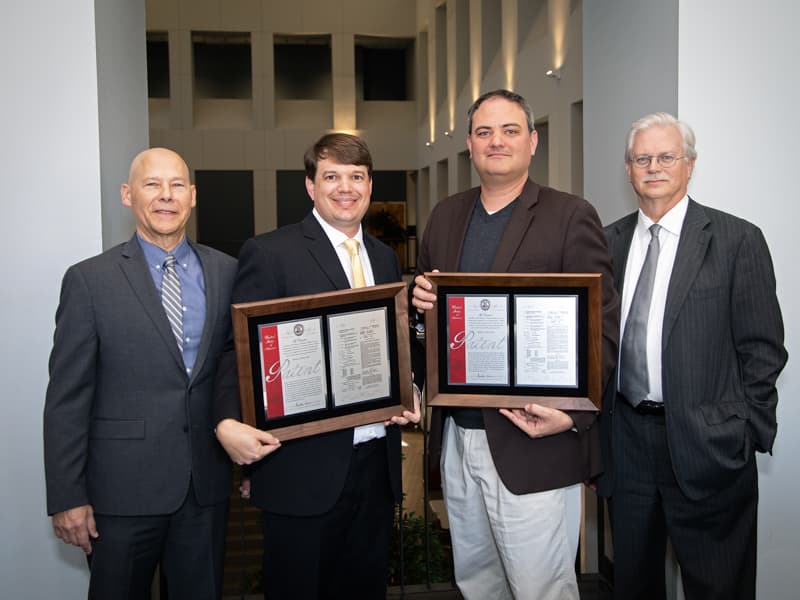
During the three years prior to the 18-month boom, the Medical Center reported just 14 disclosures, 11 applications and six issued patents. That amounts to six-fold increase in the average number of inventions per year.
What’s most impressive, Petell told the ceremony attendees, is the diversity of the inventors themselves. They include faculty and staff from four schools and 21 departments, as well as three inventors who were Ph.D. students at the time of disclosure.
When Petell joined the Medical Center in late 2017 to direct the then-Technology Transfer Office, he aimed to build a foundation for IP development and commercialization. He was “complete surprised” by the productivity that resulted.
“There’s a brand new chapter opening at UMMC,” Petell said.
The disclosed inventions represent a wide range of biomedical applications. They include diagnostic techniques for neurodegenerative diseases and heart failure and potential therapeutics for diabetes and substance use disorders. Others describe devices and methods to use during surgery or keeping an airway open.
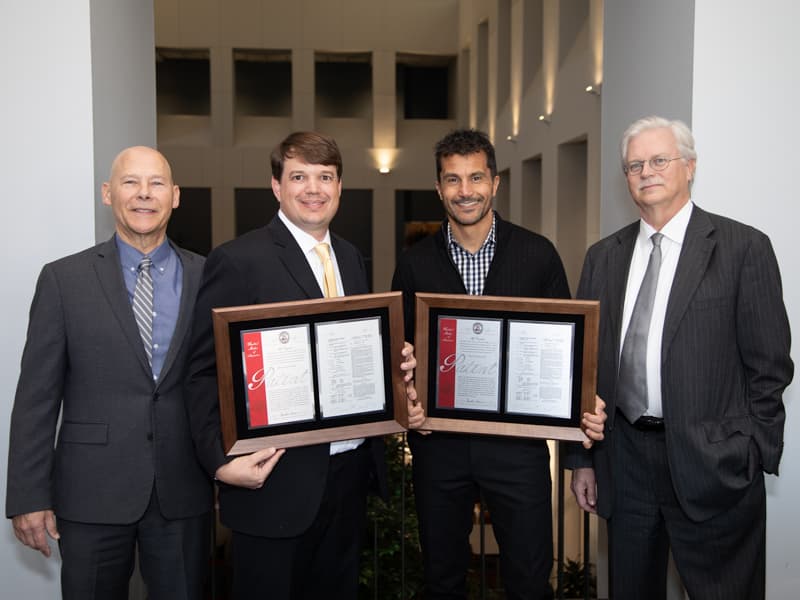
Notably UMMC has received four U.S. patents since the start of 2018: one for drug delivery in pregnancy, another for drug delivery to the kidney, markers for sepsis treatment, and a technique for the detection of liver fibrosis. Two of these were issued in June 2019, in addition to an allowed trademark for TeleER.
Dr. Richard Summers, associate vice chancellor for research, said that in past years the Medical Center recognized U.S. patent recipients during the Excellence in Research Awards.
“We’ve had this groundswell of activity,” Summers said, prompting the Medical Center to find new ways to recognize these accomplishments. “Intellectual property is separate for what it is, and what it means for the University and for Mississippi.”
Inventions and creations can generate revenue for a university through either licensing agreements of spin-off companies, Petell said. That’s the next big step for UMMC.
“It’s great to receive a patent, but what are you going to do with it?” he said.

UMMC recently reported its first licensing royalties for the products of research conducted here. Dr. Elise Gomez-Sanchez and Dr. Celso Gomez-Sanchez, professors of pharmacology and toxicology, developed several kinds of monoclonal antibodies that they licensed to biotech company Millipore.
The antibodies are used in diagnostic tests for primary aldosteronism, Celso Gomez-Sanchez said, a hormone imbalance that can cause hard-to-manage high blood pressure.
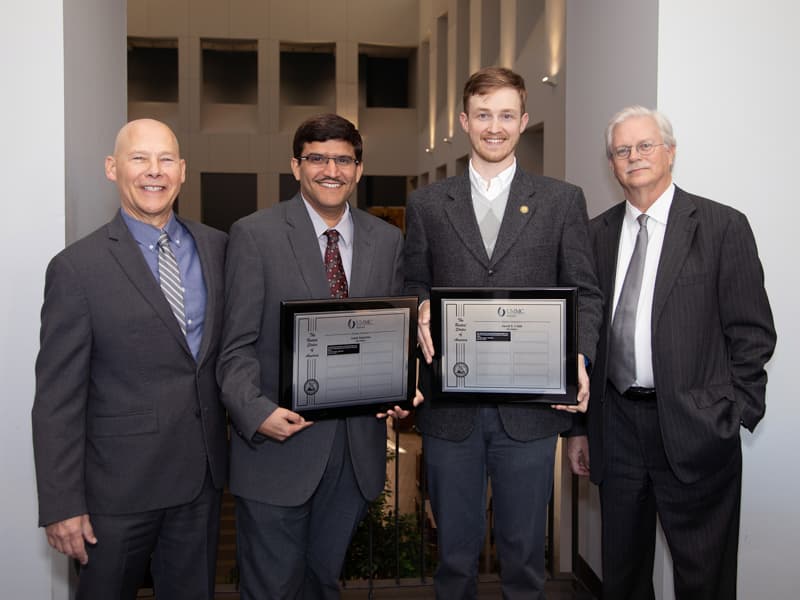
“[The licensing revenue] allows us to be able to send students and postdoctoral fellows to meetings and conferences, which allows them to connect with other researchers,” Elise Gomez-Sanchez said. If they receive additional revenue, she says, it can fund future research projects.
The ceremony also recognized three spin-off companies based on UMMC research, including two focused on elastin-like polypeptide applications and a third on physiology teaching and research tools.
Whether they are spin-offs or joint ventures with existing companies, new companies can have an added benefit beyond increasing revenue, Petell said.
“Companies tend to stay in-state and create new jobs and that drives economic development.”
Click here to view a full list of UMMC inventors, including titles of non-provisional patents applications, issued patents, allowed trademarks, licensing revenue and spin-off companies.
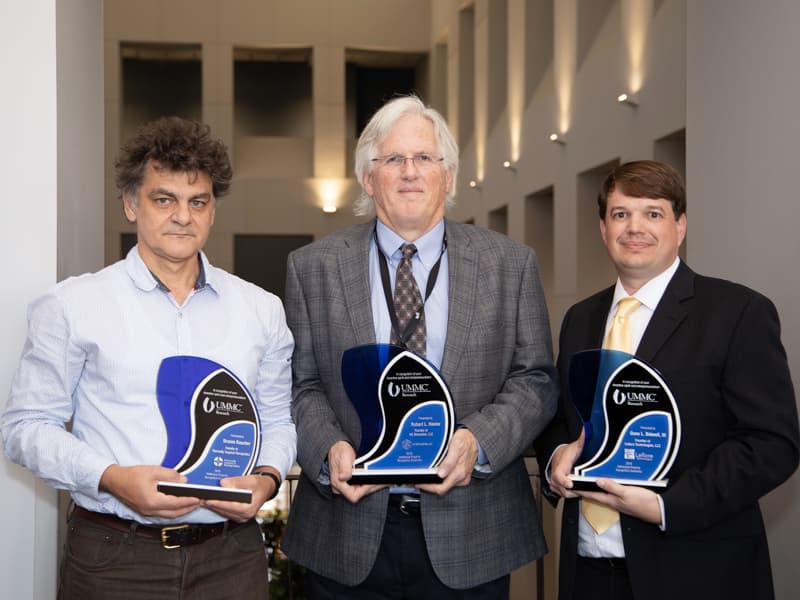
Intellectual Property 101:
Intellectual property can be any new tool, technique, design or name. UMMC’s Intellectual Property Committee assesses invention disclosures based on technical impact, patentability and market value. If they pass through the committee, the Intellectual Property and Commercialization Office works helps inventors with the U.S. Patent and Trademark Office application process.
Invention Disclosure: A document that describes a device, idea, method or other creation that may be considered patentable.
Provisional Patent Application: A “stake in the ground” that gives inventors one year to develop their invention further and file a non-provisional application. The invention is not assessed by the USPTO.
Non-Provisional Patent Application: A full, detailed application that will be assessed by the USPTO for patentability.
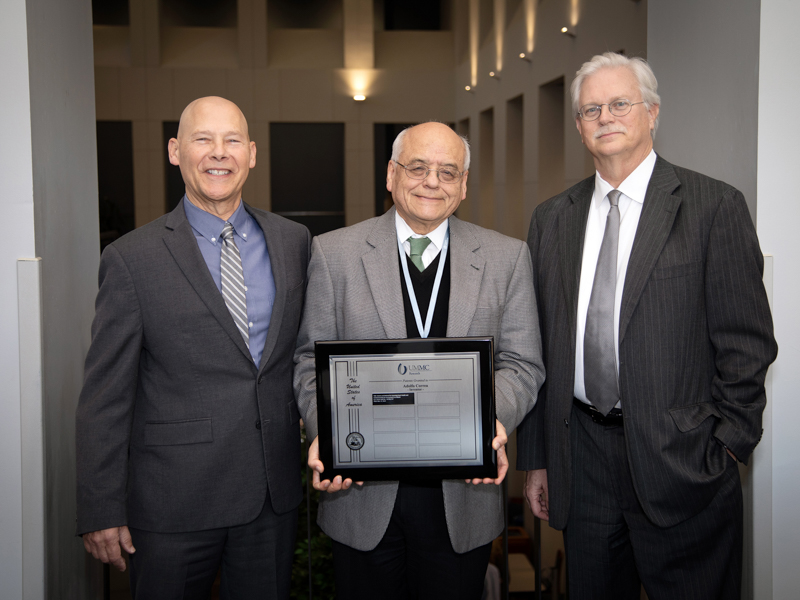
and Communicating the Assessment to a Patient"
Issued U.S. Patent: Fully protected intellectual property which gives the holder the right to make and sell their invention, excluding others from doing so.
Trademark: a sign, design or expression that distinguishes a product as being from a specific source.
Allowed Trademark: A trademark that has been recognized by the USPTO, but is not yet used in multiple states or territories.


